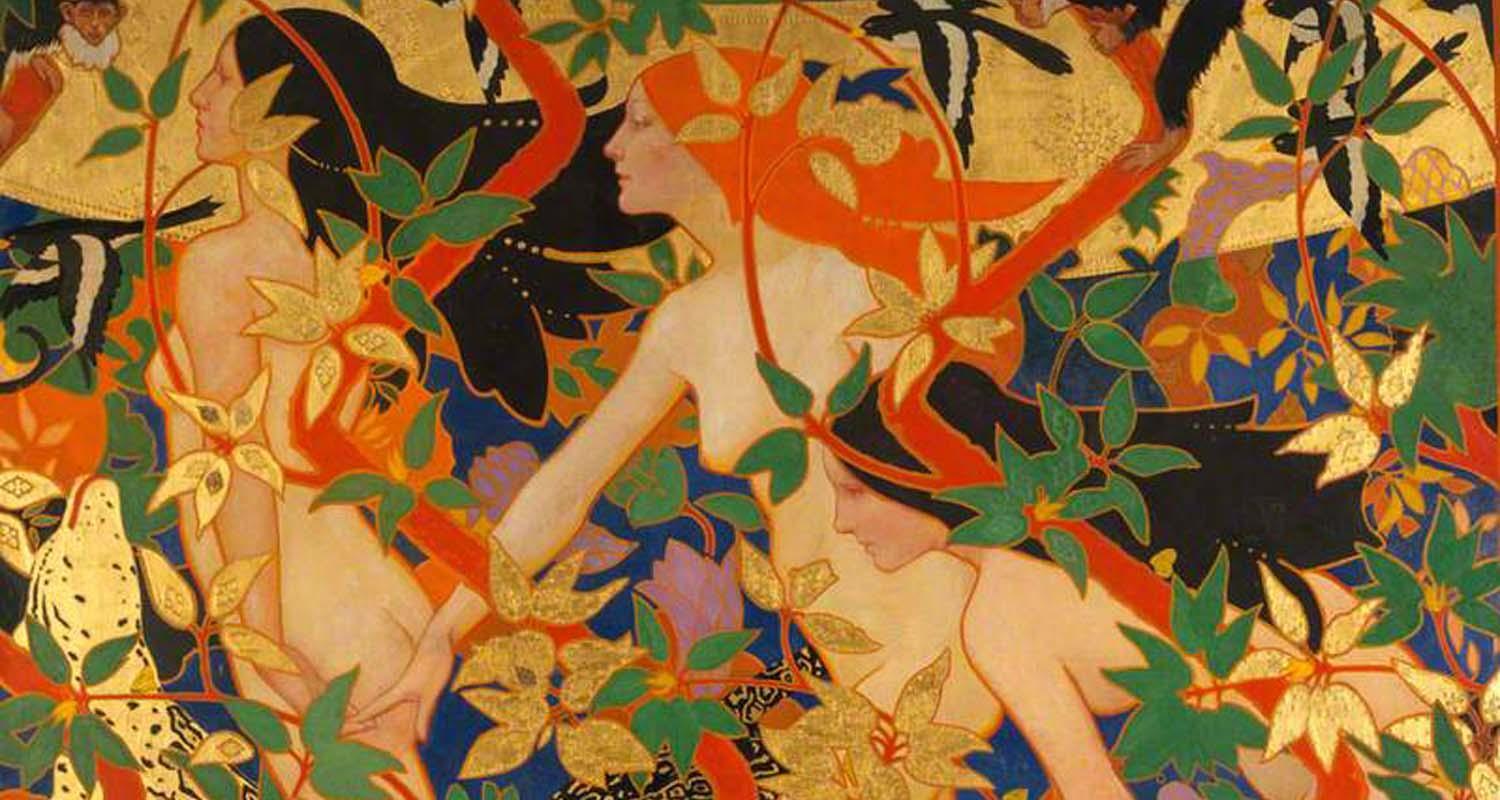This talk explores the dynamic, sensual and worldly kind of art produced by Scottish artists in the aftermath of the war. ‘Pagan brazenness’, as opposed to ‘parlour propriety’ was a quality directly associated with the Edinburgh Group of artists which formed before the First World War and exhibited together again from 1919. The talk focuses on the National Galleries of Scotland’s painting 'The Hunt' by Robert Burns (about 1926), formerly known as Diana and her Nymphs. This large canvas was originally created as part of a unified decorative scheme for one of Crawford’s fashionable tearooms in Edinburgh city centre; it was located just opposite the Scottish National Gallery at 70, Princes Street. In the mid-1930s, the writer Edwin Muir described the effect such decorated tearooms had on their visitors: the ‘walls fling themselves at you: you are punched, pummelled and rolled over and over by a torrent of harsh noise and colour’ (Scottish Journey). Robert Burns (1869–1941) was one of the symbolist artists active in turn-of-the-century Edinburgh (he published a key image in The Evergreen in 1891). While evoking his previous work, this striking painting also has an ‘art deco’ feel resonant of the 1920s. Dr Patricia Allerston is Deputy Director and Chief Curator of European and Scottish Art at the National Galleries of Scotland (NGS). She is currently co-directing the major capital project to create a new suite of galleries for historical Scottish art at the Scottish National Gallery, scheduled for completion in summer 2023. Tricia’s previous role at NGS was Head of Education (2005–13). For ten years before that, she was a lecturer in European History at the Universities of Edinburgh and Glasgow. She is a Fellow of the Royal Historical Society and an Honorary Fellow in the School of History, Classics and Archaeology at the University of Edinburgh.
Book on the link or by calling Lauriston Castle on 0131 336 2060
Pagan Brazenness?: Scottish Art in the 1920s
